The most humane way to get rid of bats is to let them evict themselves. A bat valve allows bats to fly out of your attic but prevents them from returning. But there are restrictions in North Carolina on when you can install a bat valve.
Bats’ natural roosting locations are caves and mines, but bridges and attics share similar aspects for an ideal maternity roosting location. Unlike rodents, bats cannot create their entrance. They take advantage of gaps and cracks in your Raleigh home.
Get Rid of Bats in Your Attic in Raleigh
The best time to protect your home from bats is from August 1 to April 30. The NCWRC has a moratorium on bat evictions from May 1 through July 31. Bats are only mammal that can fly. During the first few weeks of their life, bat pups cannot fly and are completely dependent on their mothers.
We can start the exclusion process at any time. Bats need a hole about the size of a quarter, and we want to make sure we find all potential entrances. Once the pups can fly on their own, we install a one-way door (bat valve). The bats can leave on their own but cannot return. Once we ensure all bats are gone, we remove the bat valve and seal the entrance.
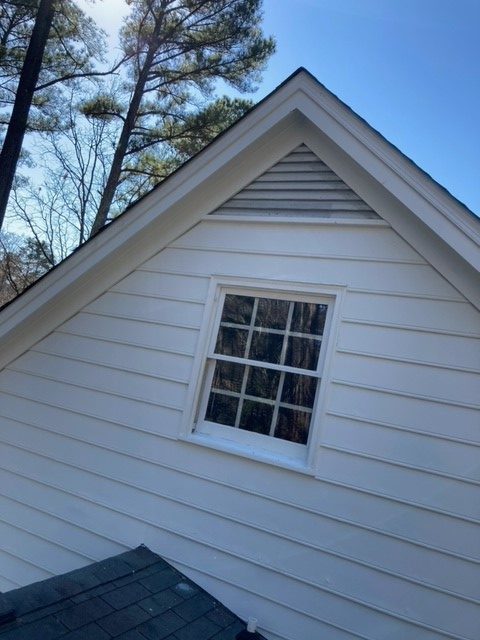
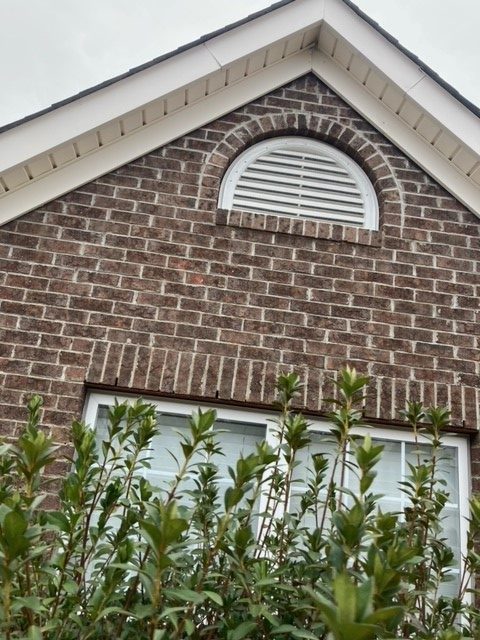
Because bats can squeeze through tiny holes, homeowners can miss all potential entrances. The experts at Trutech Wildlife Service have the training and experience to identify all potential bat entrances.
Signs of Bat Infestation in Raleigh
The most obvious signs of a bat infestation are strong odors, guano, and bat sounds.
A strong, pungent odor, resembling ammonia or a musty odor, could be a sign of accumulated bat droppings, also known as guano.
Bat guano collects under the roost location. You may find small, dark, pellet-shaped droppings accumulated in areas like windowsills, porches, or near entry points to your attic. These droppings are often found in piles and have a crumbly texture when touched.
Bats often leave greasy brown stains from their body oils near entry and exit points. These stains can be found around vents, eaves, or holes where bats may be entering or exiting your home.
Finally, another common clue is the sound of chirping or squeaking, especially during dusk or dawn, when bats are most active.
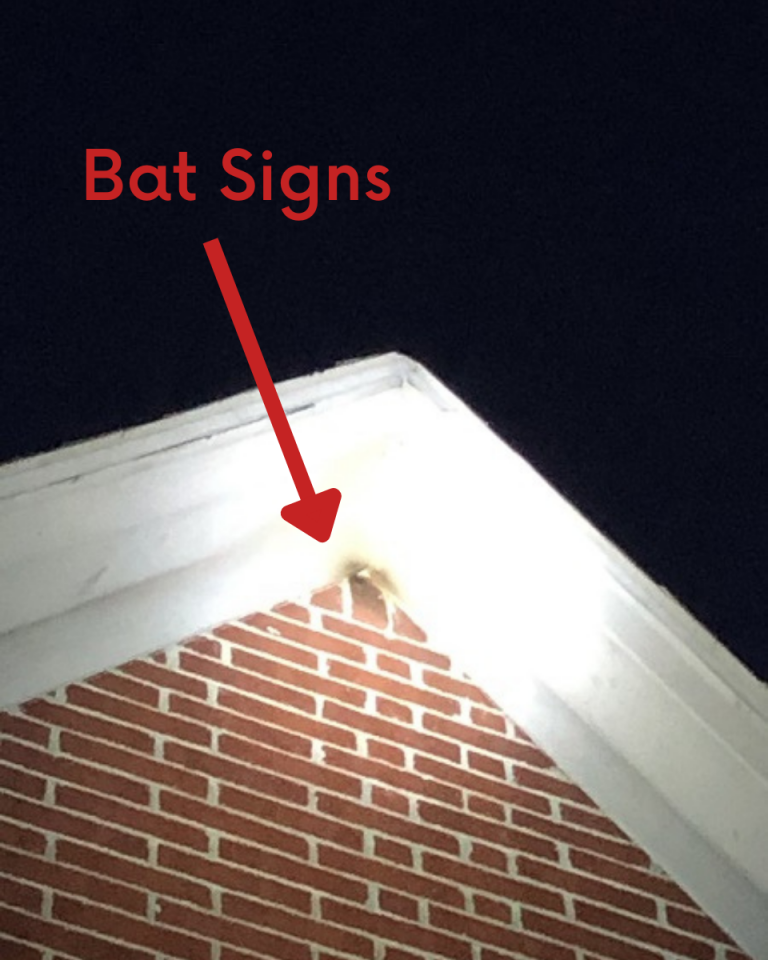
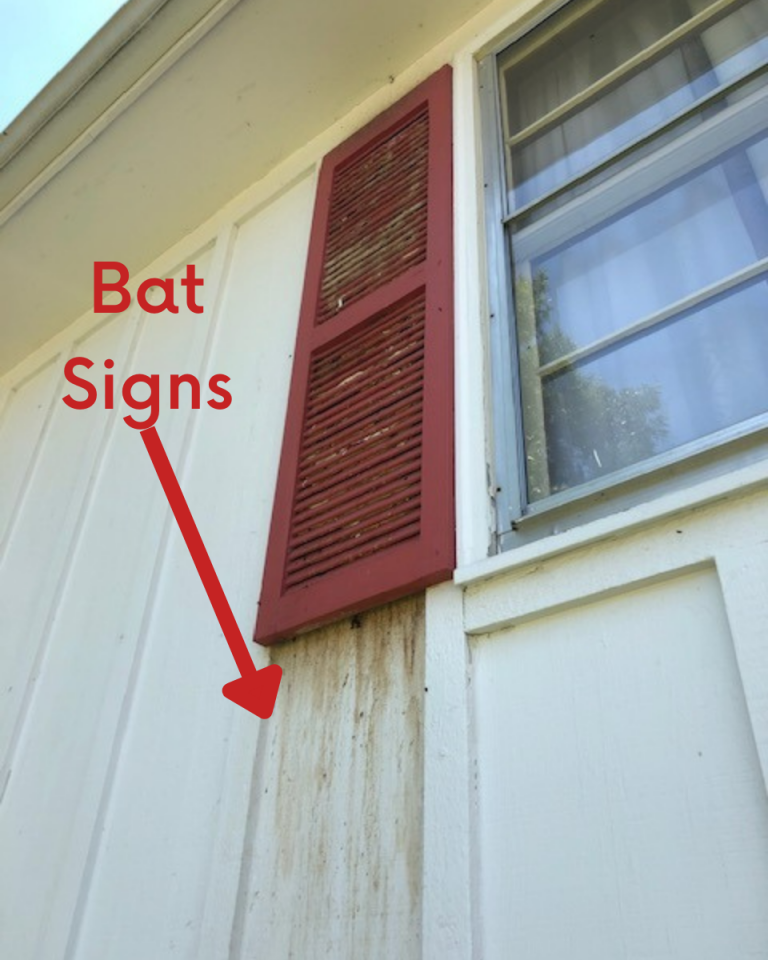
Bats in North Carolina
Of the 17 species of bats in North Carolina, 3 are listed as federally endangered, 1 is listed as federally threatened, and 10 are listed by the NC Wildlife Resources Commission (NCWRC) as a Species of Greatest Conservation Need. Because of the massive loss in these populations, there are many restrictions on how to handle bat removal. You cannot trap a bat. Bat extermination is also illegal.
Why are Bats Protected?
Bats provide significant benefits both environmentally and economically. All bats in North Carolina are insectivores. A single female brown bat can eat between 600 and 1,000 flying insects in one hour. It is estimated bats have saved the U.S. somewhere between $3.7 and $54 billion in pest control services each year.
Bat populations are threatened. White-nose syndrome is a fungal disease killing bats in North America.
Call Trutech In to Get Bats Out
We do not recommend attempting to remove bats on your own. Guano (bat poop) accumulates under their roosts. In some cases, the piles grow to be large. Bat guano must be removed because it is unsanitary and damaging to your home.
Histoplasmosis is an infection caused by breathing in the spores of a fungus often found in bat droppings. Attempting to clean up and remove bat guano disrupts the spores. Wearing proper PPE is essential to avoid infection.
Some bat species can live up to 20 or 30 years old and return to the same roosting spot. If you don’t properly seal your home, you could have a bat problem that lasts as long as your mortgage. Call Trutech for humane bat removal.
Wildlife Control in Raleigh

Raccoon Removal in Raleigh-Durham
Raccoons thrive in every county in North Carolina. Since 1987 evidence suggests the raccoon population is growing. Their preferred habitat has easy access to water,

Squirrel Removal in Raleigh
The most effective method to get rid of squirrels is to trap them. You can also get a squirrel to evict itself with a one-way
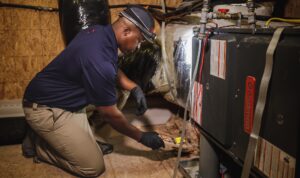
Rodent Removal in Raleigh
Rats, mice, and squirrels are some of the most destructive and most common pests in Raleigh-Durham. Protect your home with Trutech.


